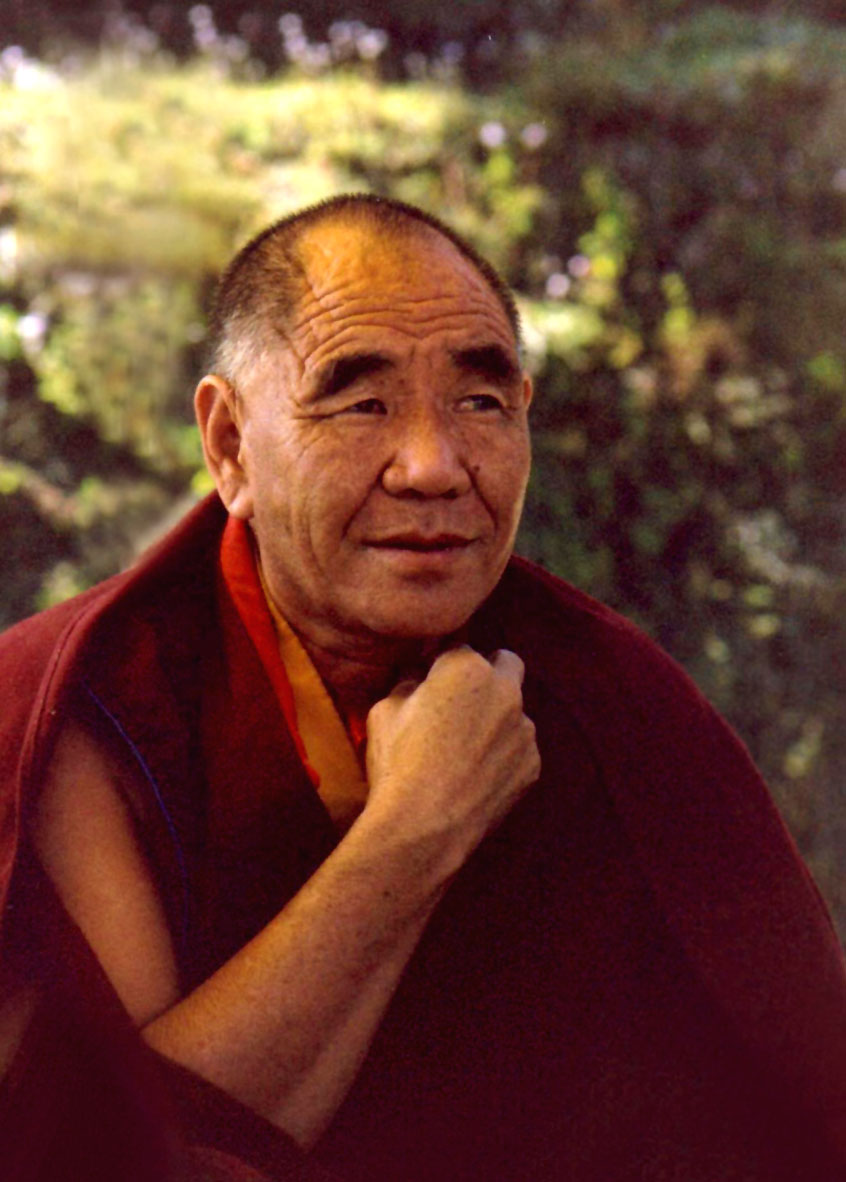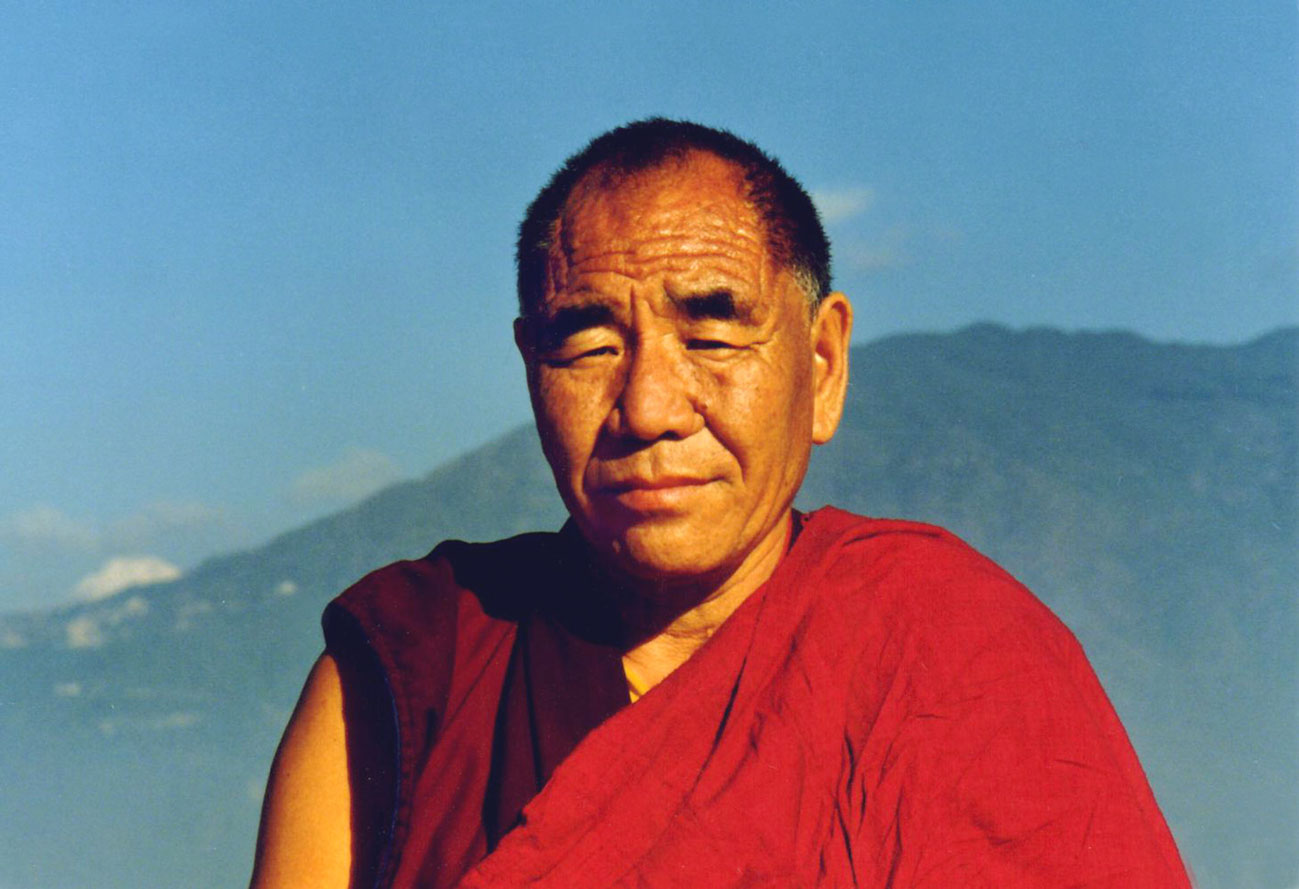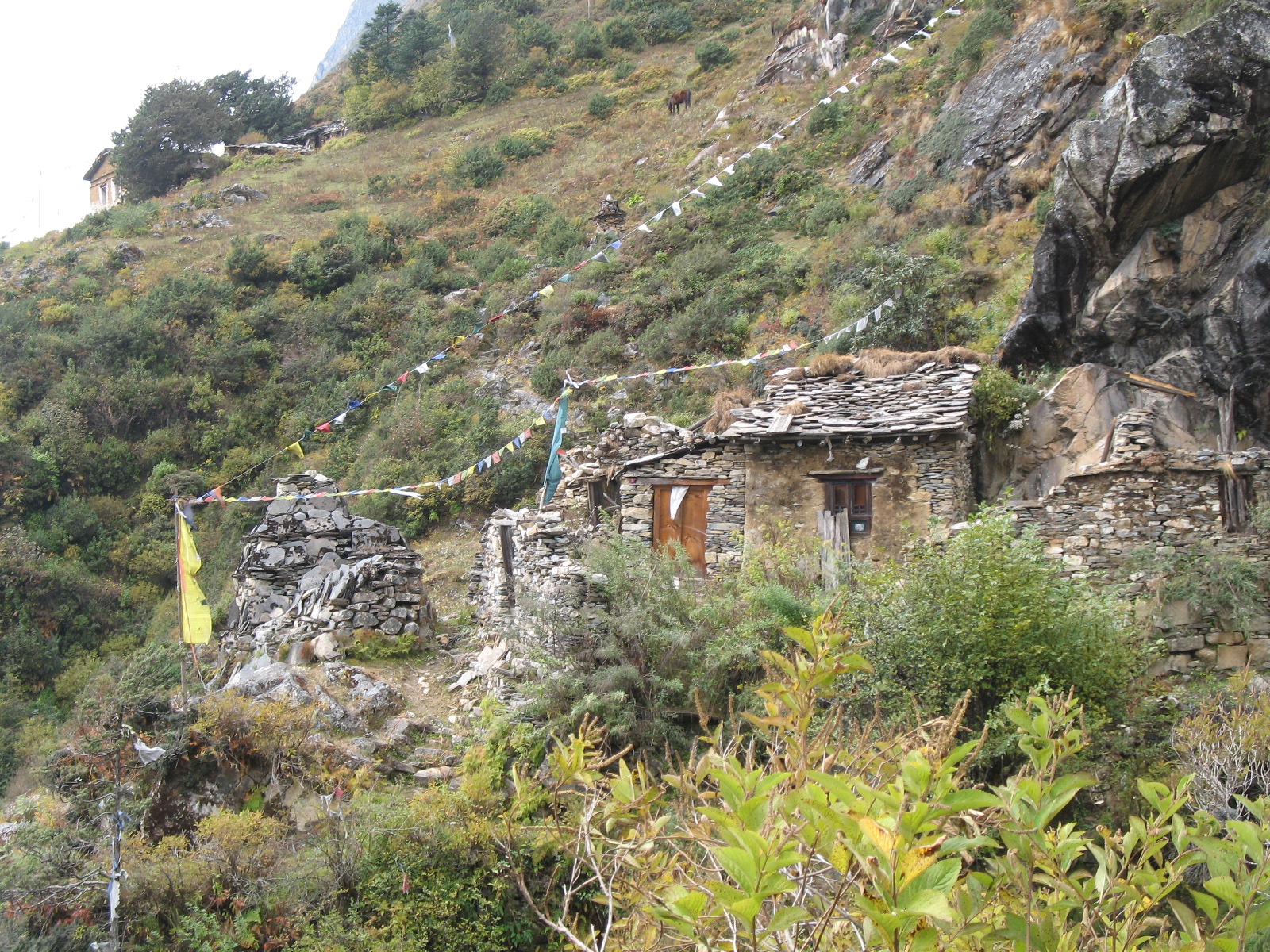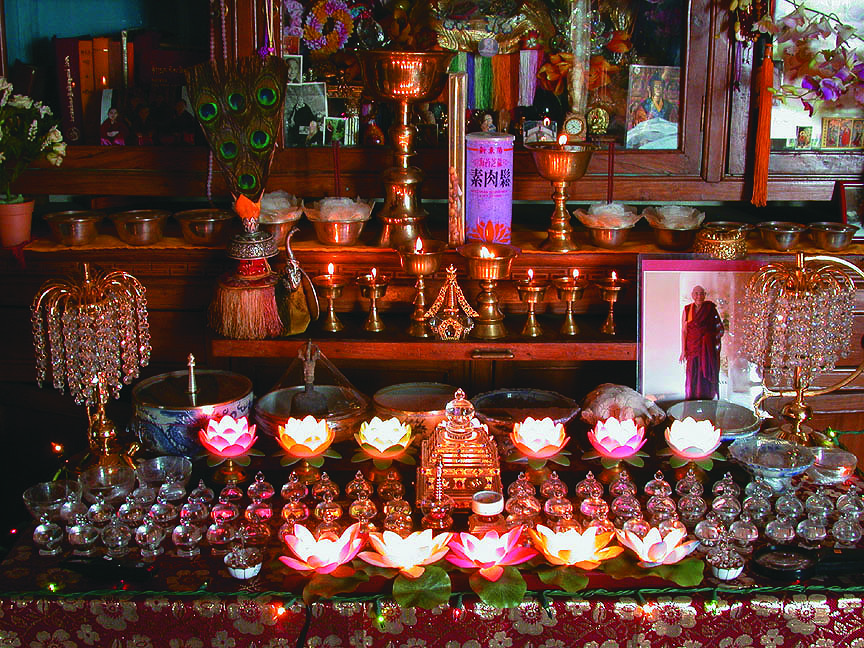Geshe Lama Konchog passed away on the 15th of October 2001. The search for the incarnation of our most beloved teacher and guru Geshe Lama Konchog began shortly after his passing. The incarnation, Tenzin Phuntsok Rinpoche, was found and enthroned in 2006.
Geshe lama Konchok

Early Life
When Lobsang Puntsog (Geshe Lama Konchog) was six years old his parents decided to send him to nearby Drepung, one of the three great Gelug monasteries in Lhasa. But already the young boy was displaying a quality that would be central to his life: he knew exactly what he wanted and would pursue it with single-minded determination. He declared that he wanted to attend Sera Monastery instead. As he had an uncle there, his parents relented. He studied in Sera from the age of 7 to 32.
His uncle, however, was a dob-dob - one of a group of monks found at most Gelug monasteries who were basically self-appointed policemen - who actively discouraged the young boy's wish to study and practice and would beat him regularly.
But nothing could deter Lobsang Puntsog. In the monasteries, it was forbidden to take tantric initiations until one had completed the study of the five major treatises. However, at the age of nine he joined a group of lamas and monks to take the Vajra Yogini initiation from his root guru Trijang Rinpoche, the junior tutor to His Holiness the Dalai Lama. Throughout his years at Sera, beginning when he was a child, Lama Konchog would disappear for months at a time, traveling to various places around Tibet to take into his astonishing mind a whole range of skills, rarely found all in one person. "He was expert in so many fields," says Tenzin Zopa. "Apart from the sutra and tantra teachings of all the four traditions of Tibet, he was also accomplished at Cham dancing, rituals, sand mandalas, astrology, making divinations, architecture according to the Vinaya - his knowledge was astonishing."
For Geshe Jampa Tseten, a friend of Geshe la, it is clear now that his "crazy" schoolmate was not an ordinary being. "He was a holy being, a great meditator, since he was a small child."
Life in the Mountains

Geshe Lama Konchok in Tsum
Geshe lama Konchok fled from Tibet in 1959 (after the uprising against the Chinese in 1959), together with thousands of other monks and nuns. According to Lama Lhundrup, the ex-abbot of Kopan Monastery, the route that Geshe Lama Konchog followed out of Tibet was revealed in a dream. The route took him to the village of Tsum, just over the border into Nepal, and to the cave of Tibet's beloved yogi and saint, Milarepa. The cave is known as 'Cave of the Doves', high in the mountainous jungle, where only tigers and other wild animals, as well as deer, lived. It is said that dakas and dakinis transformed into doves here to listen to Milarepa's teaching. It was here, also, that Milarepa was offered robes by his sister.
According to his own account, as he told to Tenzin Zopa, Geshe Lama Konchog trained himself during the first few months "to have an empty stomach. I lived on nettles, and gradually was able to practice 'wind chulen' " - a method whereby the meditator can "take the essence" (chulen) from nature. The usual method practiced by yogis is to take the essences from rocks and flowers, then mixing them into pills. But Lama Konchog decided to do without all sustenance. He literally took the essence from the air, and was able to survive.

Geshe Lama Konchog lived like this for at least seven years: full of utter determination to achieve realizations, compelled by great compassion, and delighting in his solitude, with only the tigers and deer for friends. Asked later how he felt about conditions in the West, he said, "It is all contaminated! The best food I ever had was in the cave. The best place I've ever lived in was the cave. The best friends I ever had were in the cave." The cave needed to be climbed into, and the deer "would support each other in order to get in. Sometimes they would sit all day and night. We'd stay peacefully together with no fear. For me, that was a pure land!"
Coming to Kopan
Altogether Geshe-la was in the mountains in retreat for 26 years. He had come to Kathmandu a few times and met Lama Yeshe, his old friend from Sera, and although Lama Yeshe requested him several times to stay at Kopan, Geshe-la did not accept but always returned to Tsum. There was one time when Geshe-la accompanied Lama Yeshe to the airport in Kathmandu when Lama was leaving on a visit overseas and on the way someone offered Lama a pair of shoes. Geshe-la felt very sad because he thought that he would not see Lama again.
Finally in 1985, one year after Lama Yeshe passed away, Geshe-la came to stay at Kopan. Geshe la started to teach the monks in rituals, pujas and most spectacular, introduced cham - the monastic ritual dance to Kopan. He was a vigorous debater with the monks and everybody enjoyed challenging him. Geshe la was famous for his skills with Tibetan medicine, and with making observations, advising people on pujas for their health, success, and many other things. Several times Geshe la traveled to Taiwan to teach at the newly established center there; he also was frequently invited to Amitabha Buddhist Center in Singapore o teach.
Geshe Lama Konchog's Sickness and Death
While traveling through Singapore to Taiwan in 2000, Geshe La underwent a health check there on urging of his students, and was diagnosed with advanced stomach cancer. On advice of Lama Zopa Rinpoche and other lamas, Geshe did not undergo an operation, as the cancer was too far advanced. Geshe la came back to Kopan in Spring 2001.
Around 8:15 on the evening of October 15, 2001, Tenzin Zopa and others were with Geshe Lama Konchog. Tenzin Zopa remembers: "Geshe-la said to us, 'Now the vision of the mirage has appeared' - the first of the eight internal signs of death - 'so please go and start the prayers.' We all left except my brother Thubten Lhundrup, who recited Geshe-la's daily prayers for him. At 8.50 his breathing stopped."

Prayers were performed in Geshe-la's house throughout the day and night during the seven days that he remained in meditation. On October 22, his holy body was carried in solemn procession to the site of the fire puja, which lasted for several hours amid auspicious signs of five types of rainbows and a drizzle of flowers from the sky. At the end, the specially constructed stupa containing the fire was sealed.
The Yamantaka Fire Puja held at a site chosen by Lama Zopa Rinpoche was attended by all the lamas, monks and nuns of Kopan, as well as many devoted students from abroad. After his cremation, many amazing relics were found in the cremation stupa, such as pearlike relics, black hair, a tooth changed into a conchshell shape.. These extra ordinary relics are now displayed in a special shrine room at Kopan.
Some of the relics are now part of the Maitreya Relic tour and the Jade Buddha Relic Tour, bringing blessings to thousands of people.